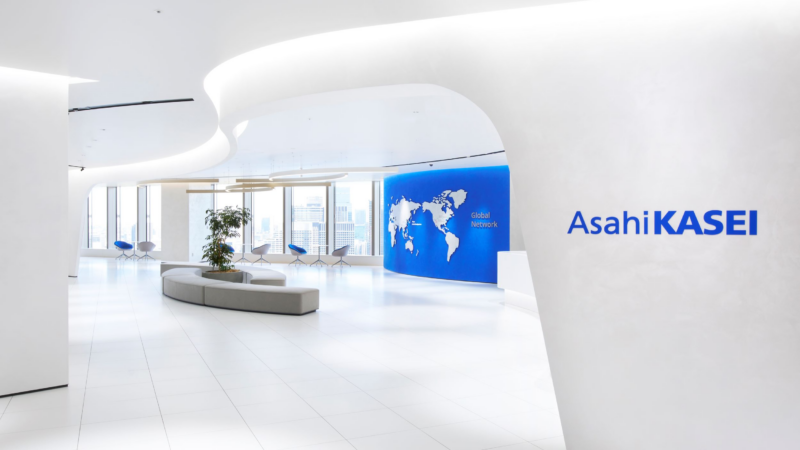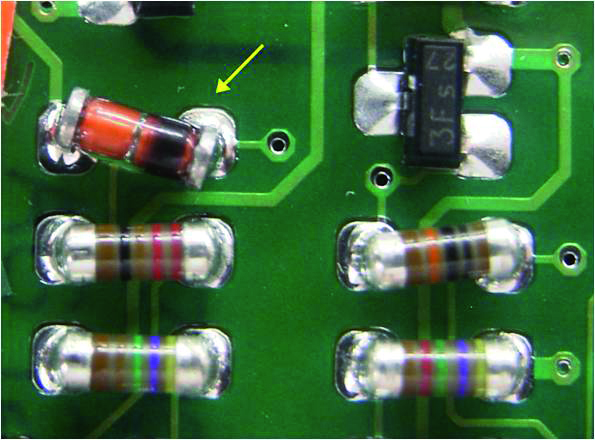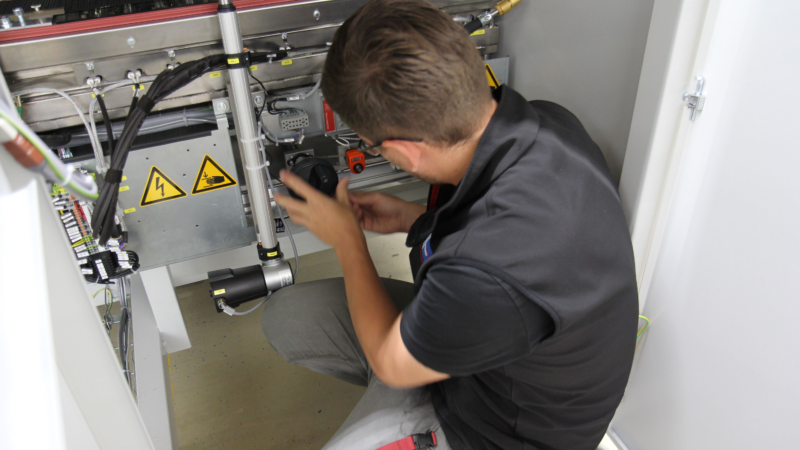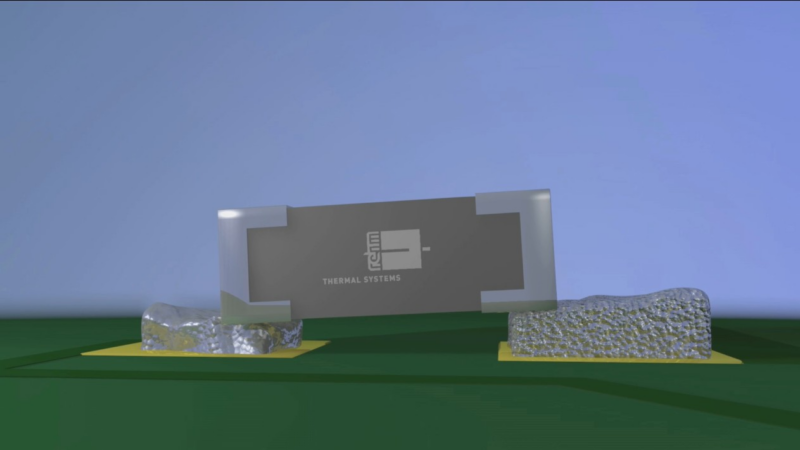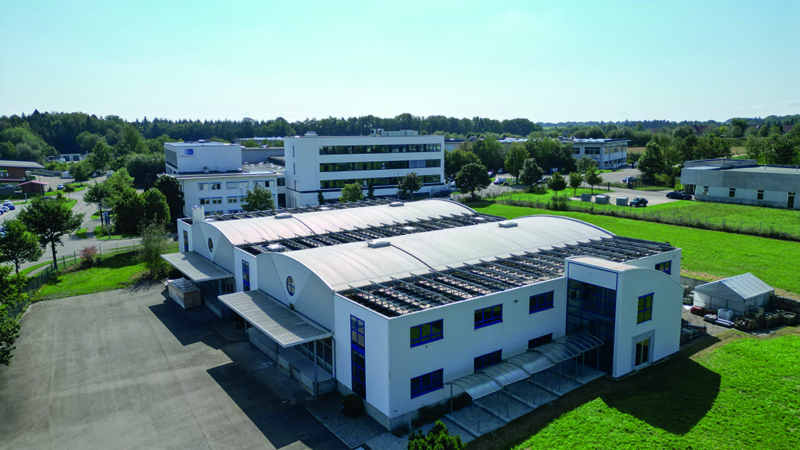A new vacuum unit now enables convection soldering processes with or without vacuum – with only one soldering
Energy-efficient, low-maintenance and voidless – Rehm (http://www.rehm-group.com) offers innovative solutions for reflow soldering with a variety of VisionXP+ options. A new vacuum unit now enables convection soldering processes with or without vacuum – with only one soldering system.
Vacuum in electronics production
It was when Galileo Galilei (1564-1641) posed the question of the existence of absolute emptiness (lat. vacuus) that this concept was first brought from the philosophical realm into the field of physics and technology. Today, 368 years after the generation of the first artificial vacuum by Torricelli, vacuum technology is an important and well-established component part of process engineering. Low vacuum (from 300 mbar to 1 mbar) is widely applied for a variety of purposes, in particular in electronics production. The most important of these are drying, dispensing, gas exchange and vacuum soldering. While the influence of voids on the reliability of the solder joints of components with low current load, e.g. for signal transmission, has been an issue of heated debate among researchers and users for years, void-free solder joints are increasingly demanded in particular for power electronics and high-reliability components. These are produced when the still molten solder is subjected to a vacuum process immediately after the creation of the soldering joint.
Reflow soldering and vacuum – many years of successful synergy
The application of vacuum technology in the soldering of electronic components is deeply rooted in Rehm“s company history. As long ago as 1999, the first vacuum soldering system VAC400 was brought onto the market. Shortly afterwards, condensation soldering technology (vapour phase soldering) was combined with suitable vacuum technology in a Condenso soldering system. When vacuum soldering with the Condenso, the vacuum can be applied in the process sequence optionally as a pre-vacuum and/or as a final vacuum. So, alongside its excellent heat distribution, the Condenso offers the possibility e.g. to dry pastes, as well as to production of solder joints with a void content of less than 2 %.
The desire for a higher throughput and a better integration of SMD lines required new technological solutions. By combining a convection reflow soldering VisionXP+ with a vacuum chamber, the already established expertise for both technologies was successfully united in a new option for this type of system.
Flexible vacuum option
As soon as the solder is molten – and while the solder is still in the optimum molten state – the VisionXP+ with vacuum option reliably removes voids and gas emissions. Void content of less than 2% can be realised with a vacuum between 100 mbar and 10 mbar (Fig. 1a). For an exact setting of the process parameters for the VisionXP+ Vac the vacuum level is measured not on the vacuum pump but directly in the process chamber. Pressure gradient and speed of the vacuum prozess can be set individually and saved as profile parameters. The mechanical construction of the system offers the possibility of using the vacuum optionally or applying the VisionXP+ as a classic convection soldering system (Fig. 1b).
Reduced maintenance requirements
The vacuum chamber is installed in the VisionXP+ Vac (Fig. 2) as an enhancement to the available peak zones. The integrated pyrolysis and separate filtering of the atmosphere extracted from the vacuum chamber are additional plus points in terms of maintenance and cleaning. A generously dimensioned vertical travel range of the vacuum chamber in the service position enables good access to the internal mechanisms during maintenance periods. The automatic running of the process chamber into the processing or maintenance positions minimises downtimes and reduces maintenance effort.
Divided, separately regulated transport system
The VisionXP+ has a tripartite transport system: pre-heating/peak area, vacuum unit and cooling zone. All three areas of the transport system can be optionally equipped with a central support for particularly wide boards. The possibility of reducing the transportation speed in the cooling zone when using the vacuum enables the extension of the cooling time of components and therefore guarantees an optimum temperature for subsequent process steps. The throughput of the system is additionally increased with the expansion of the transport system by a second track.
Precise pressure and temperature profiling
All heating zones of the VisionXP+ Vac (http://www.rehm-group.com) are regulated individually and separated from each other thermally, guaranteeing flexible profile guidance and a stable reflow process. The measurement of a temperature profile with the vacuum process switched on (Fig. 3) shows that despite a very low vacuum of 10 mbar, all profile settings have been fulfilled ( 3 K/s heating, tL 90 s, TP 240 °C). With the help of the heating integrated into the chamber, the temperature of the components inside the vacuum unit can be adapted to the settings of the most common standards. This refined solution ensures a time-efficient and stable production process.
Condensation or convection – Rehm offers both procedures with and without vacuum
In order to identify a suitable combination of condensation or convection soldering and vacuum technology, the individual aims to be achieved must first be precisely analysed. Despite the common main requirement of reducing the voids content in solder joints, the soldering procedures differ in their possibilities and applications. Table 1 compares several important features of the two vacuum soldering procedures. Considered to be crucial here are the type of component to be processed, the availability of the vacuum processes and the productivity.
Production, component and customer-specific aspects always play a primary role in the selection of the optimum combination of soldering and vacuum technology. In our Technology Centre in Blaubeuren, there is the opportunity to test both processes and to ascertain the optimum process for the component to be manufactured. Since the market launch of the VisionXP+ Vac, several systems have been placed successfully on the market. Our customers have been won over by the significant increase in the reliability of the soldering joints when using the vacuum process and the flexibility of the system that allows the switching off of the vacuum process if desired.
Rehm Thermal Systems was founded in 1990 by Johannes Rehm and is a provider of reflow soldering systems and drying systems for the electronics industry as well as a manufacturer of fast firing systems and solar dryers for the metallization of solar cells. With Simply. More. Ideas. our goal is to become technological leaders in all areas of production and offer our customers sustainable, future-oriented products.
Firmenkontakt
Rehm Thermal Systems GmbH
Marketing Department
Leinenstrasse 7
89143 Blaubeuren-Seissen
+49 7344 9606-0
info@APROS-Consulting.com
http://www.rehm-group.com/
Pressekontakt
APROS Int. Consulting & Services
Volker Feyerabend
Rennengaessle 9
72800 Eningen
+49-7121-9809911
info@APROS-Consulting.com
http://www.apros-consulting.com

